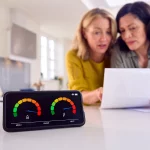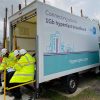10Mbps USO Confusion as Hopes Fade of Universal Superfast Broadband
Last week a media storm was caused after one newspaper dredged up an extract from the Government’s on-going consultation on the proposed 10Mbps Universal Service Obligation (USO) and used it to infer that the final 5% of the UK (most rural areas) would be left behind, but the reality is more complex.
One of the reasons we didn’t write up our own take on the story last week is because we’d already covered it on 23rd March 2016 (here), when the Government’s consultation was first published, and we even highlighted the same controversial statement in a later edit. But since then we’ve read a lot of the articles and most overlook some crucial points. Just to recap, here’s the bit that’s been causing so much angst and perhaps rightly so.
Advertisement
USO Consultation Statement
We believe that, for those premises that will not have been reached by commercial investment or by the Government’s interventions by the end of the current planned programmes, the time has come for a demand-led approach.
Given the high costs of providing broadband access to premises in remote areas it is right that this is done on request, rather than rolling it out and waiting to see if people in those areas want to be connected.
We know from the various interventions that the Government has made to date that it is unlikely that everyone will want to be connected, even if that option is made available to them, and so we do not believe that an additional broadband roll-out programme at this time is proportionate or would represent value for money.
The final paragraph is a bit of a language fudge if ever we saw one, not least because there seems to be plenty of evidence to show that uptake of “superfast broadband” (24Mbps+) services is often higher in rural areas since those are the communities that have been left most disadvantaged through years of considerably slower connectivity. Meanwhile the BDUK and BT scheme has reported many times stronger uptake than originally envisaged.
Similarly saying “it is unlikely that everyone will want to be connected” is an incredibly vague statement and could be applied almost anywhere in the UK because you will always find people who want nothing to do with the Internet, both in urban and rural areas alike.
On top of that if all you offer the remotest of communities is a deeply restrictive and inferior subsidised Satellite solution, with a few better quality wireless network alternatives in a small number of areas, then perhaps don’t expect wildly positive take-up. Some communities have also expressed concern that by taking such solutions they may rule themselves out of future state aid supported upgrades to the fixed line network, which is a narrative that local authorities often fail to clarify or combat.
Fast broadband, but only “on request”?
Finally, there’s the issue of “done on request“, which some newspapers have perhaps twisted to suggest that faster broadband won’t be rolled out automatically at all to the final 5% and once again the reality is always more complicated. In order to understand this we must first look at the current USO.
Advertisement
Ofcom’s existing USO only requires that BT / Openreach (and KCOM / KC in Hull) deliver, following the “reasonable request of any End-user” (i.e. demand-led), a telephone service that includes the ability to offer “data rates that are sufficient to permit functional internet access” (here); strictly speaking this only covers ancient dialup (28.8Kbps) connections.
The current telephony USO also sets a cost threshold of £3,400. For connection costs below this, households pay a standard connection charge to BT of £130 (ISPs sometimes reduce or remove this). For the most expensive to connect premises, consumers have the option of covering any construction charges over this threshold (could add £££ thousands), alongside the standard connection charge.
One of the reasons this “request” approach exists is because it is not realistic to expect telecoms cables to already be present over 100% of the country’s land mass and Openreach also needs legislative flexibility to account for new build houses (i.e. the house often exists before you connect it up); BT may only find out that the build has been completed when a customer orders the new service.
The other issue is one of simple cost. If the USO was ever truly universal and had no cost cap then somebody could build a small house on top of a mountain and expect the telecoms operator to connect them up for a tiny setup fee, even if it might cost the operator tens or even hundreds of thousands of pounds to do the complex engineering.
Advertisement
The good news is that most people don’t build on top of a mountain and as such the USO costs are usually more controllable, but bringing a 10Mbps USO into play may present more of a challenge; depending upon the final approach.
Where are we really with the final 5%?
As it stands the Government’s Broadband Delivery UK programme currently aims to make “superfast broadband” available to 95% of premises by 2017/18. After that around 300,000 very remote rural UK premises have the option of taking the ‘up to’ £350 subsidy for a Satellite service (or a wireless network, if you’re lucky), which reflects a bit under 1% out of the final 5%.
We also know from BT and BDUK that the final contract completion, thanks to reinvestment from clawback and better than expected deployment savings (partly due to a greater than originally anticipated focus on rolling out cheaper FTTC vs more expensive FTTP), should push the actual coverage total to a hair over 96% and separate altnet expansion may eventually help this pip to nearly 97%.
At this point we’re now talking more about filling the final 2-3%, which is roughly where the 10Mbps USO is going to be focused and Openreach’s existing “fibre broadband” network could more easily be put within reach of those through upgrades like Long-Reach VDSL (FTTC). So in most cases a future USO compliant network may actually be present BEFORE you request the new line, but there will always be exceptions just like under the current USO.
On the other hand we have moved with the USO’s focus from talking about 24Mbps+ speeds and instead it’s 10Mbps+ for the final 2-3% or so. In that sense there’s no escaping the inability to deliver universal coverage of 24Mbps+ capable fixed line connectivity, which some will see as a betrayal since many supporters of the Conservative Party (Government) hail from rural areas.
A 10Mbps USO might fill the gap if it existed today, but by 2020 it will already be starting to look slow (the consultation has hinted that the speed could eventually be raised again). On top of that Europe’s Digital Agenda, which expects all EU states to put speeds of 30Mbps+ within reach of every household by 2020, may be missed (not many countries are actually expected to achieve this goal, but the UK will at least come very close).
Equally it’s a fact that you have to spend a lot more money to connect smaller communities, where getting a return on that investment becomes extremely difficult. The USO will certainly require some funding and not all of that is expected to come from BT (or KCOM in Hull).
The Government are musing over the possibility of applying a broadband levy (tax) to ISPs and their customers, although this would be controversial in some quarters (example). Alternatively we’re still waiting to see details of the proposed Broadband Investment Fund, but the initial outline suggests that it’s more intended for alternative network operators.
In the meantime the USO is currently still in the consultation phase and no decisions have been taken. As such the positive side of all the negative media coverage last week could be that it prompts the Government to adopt a more robust solution for the USO, but right now they’re still in defence mode.
https://twitter.com/edvaizey/status/728865330701946880
Mark is a professional technology writer, IT consultant and computer engineer from Dorset (England), he also founded ISPreview in 1999 and enjoys analysing the latest telecoms and broadband developments. Find me on X (Twitter), Mastodon, Facebook, BlueSky, Threads.net and Linkedin.
« UPDATE2 New Homes Development in Bonnyrigg Stuck with Slow Broadband


















































Comments are closed